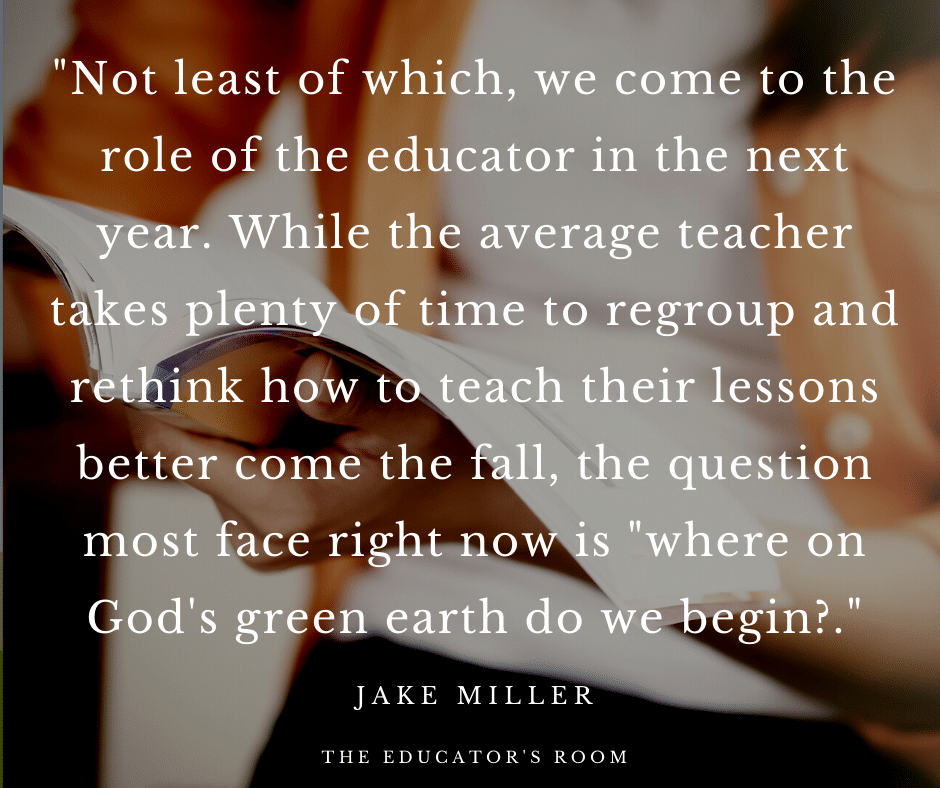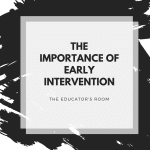When the 2020 Summer Olympics were postponed, I knew there would be a new event that would test the mettle of educators, students, parents, and other stakeholders in education. It’s trivia-based, and it has only one question. It’s called “What the hell happens in the fall?”
COLLEGE
What happens in college is as varied as the response to COVID-19. There certainly are so many factors to take into consideration – location, location, the location being the most prominent. But as post-secondary institutions grapple with what to do (and here’s a pretty exhaustive list of who’s doing what), they are generally falling into 4 categories: meeting in-person, a hybrid model, complete online instruction, and, in rare circumstances, outright shutdowns. I’ve read plenty of interviews with college presidents, and it seems like each is expressed with these 6 simple words: “it’s hard to know what’s next.” With so much up in the air, it’s estimated that upwards of 1 in 5 students will be taking a gap year this year, a stark contrast from my investigation that termed barely 1% of students chose to do so just 2 years ago.
K-12 SCHOOLS
K-12 schools are facing a similar predicament. The problem is, not all the options afforded to universities are on the table. Schools have been forced to pivot more quickly than ever before, and while there is most certainly room for growth, to think that public schools across the world have transitioned so quickly is pretty amazing. That’s largely thanks to the tenacity of teachers.
But unlike college, schools face many more complicating variables. If a student doesn’t show to a college course, they simply fail; they can and will be expelled. That task is much more Herculean by a body governed by the principle of Free and Appropriate Public Education (FAPE) for all. In meeting FAPE, children ages 5-18 also do not have the ideal home situation – parents are often needed to guide if not cajole their child into learning. There are Individualized Education Plans (IEPs) for special ed students, and those are the same kids facing a hurdle to have the appropriate services at their disposal. If learning is to be done online, making sure that every child has a computer and reliable, high-speed Internet is a task that our federal government must undertake, as Colorado leads the nation with 87% of households with the Internet; Arkansas is least with 71%. And if we’ve learned anything from this abbreviated school year of teaching online, it’s just because a kid has a computer and the Internet doesn’t mean they’re going to attend school.
Not least of which, we come to the role of the educator in the next year. While the average teacher takes plenty of time to regroup and rethink how to teach their lessons better come the fall, the question most face right now is “where on God’s green earth do we begin?” Some districts have been incredibly mum, with their silence leading to anxiety over what is to occur. Most districts, especially those serving high-poverty children, will be facing a budget crisis as they’ve never before seen. Compounding that is the possible loss of students who may opt for stay-at-home, online charter schools – that is unless districts put the cart before the horse and offer a fully-online version of school for uncomfortable, distrusting parents. As The New York Times reports, 70% of 132 polled epidemiologists are okay with sending their kids by September, but 30% are not. And the staff are worried about everything from a loss of social-distancing in the lockers and lunches to being laid off or asking to take a salary cut when they’re going to work harder than ever to meet the diverse needs we’re all facing.
SO WHAT ARE WE TO DO?
We are to control what we can control. And here’s how to get a grip with the summer of waiting:
- First and foremost, take time for yourself and your family. This has become a taboo statement, but, seriously. If this viral outbreak has taught us anything, it’s to appreciate the ones we love. Don’t bypass this first step.
- Engage in conversations with your decision-makers. For most districts, that involves the school board, the administration, and the union. Be part of the discussion to have multiple plans on the table that won’t overwhelm. In our district, for example, we have adopted an alternative calendar — starting on September 8th, just in case we need it — as well as 3 plans to educate our students: standard, in-person school, completely online, and a hybrid of both. Having options on the table here is a good thing so that lesson plans can be made to meet tempered expectations.
- Use this time to really meet your students’ needs. Ask yourself how you can serve them from home, on a possible abbreviated schedule at school, or how you can put more learning in their hands. All of this is confusing and frustrating, no doubt, but it doesn’t have to all be bad. If we’re in this game to make lifelong learners, there’s no better time to start than the present.
- Find one piece of content that you can improve. For me, that’s my Reconstruction unit through the eyes of the Black Lives Matter movement. More on that later.
- Find one piece of tech to add to your toolbelt. I’ll be incorporating more checks-for-understanding this year, probably with ungraded quizzes, so if there are any suggestions from our readers, I’m all ears.
- Strengthen something you were already doing well. As boring as it sounds, I’ll be recording some more of my multimedia lectures because my students kept asking for more of them.
- Do your best and be there for the students. I’d rather spend my time talking to a struggling student than worrying about how a lesson didn’t go perfectly.
Now that we’ve been trained so well, bring on the question — “what the hell happens in the fall?” — because we’re ready.






